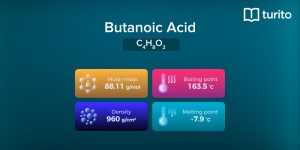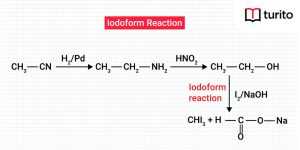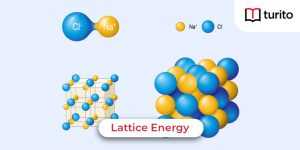A compound of chromium and one of the most popular chemical reagents in organic chemistry, Potassium dichromate serves as a strong oxidising agent. It helps bring various chemical reactions wherever oxidation is involved in commercial and laboratory settings. The compound is handled with the utmost care because even slight carelessness can lead to hazards.
Table of Content
- Occurrence of Potassium Dichromate
- Formula
- Structure
- Preparation
- Properties
- Chemical Properties
- Uses
- Frequently Asked Questions
Occurrence of Potassium Dichromate
Potassium dichromate occurs naturally in the form of a rare mineral called lopezite. It is obtained as vug fillings in the Atacama Desert’s nitrate deposits in Chile as well as in the Bushveld igneous complex in South Africa.
Potassium Dichromate Formula
It is a dipotassium salt of dichromic acid. It contains the following elements:
- Potassium
- Chromium
- Oxygen
The potassium dichromate formula is K2Cr2O7. The IUPAC name of K2Cr2O7 is Potassium dichromate(VI). The other names of the compound are as follows:
- Potassium dichromate
- Potassium bichromate
- Bichromate of potash
- Chromic acid, dipotassium salt
Potassium Dichromate Structure
It is an ionic compound containing two potassium cations and a negatively charged dichromate anion. The dichromate has two hexavalent chromium atoms (with a 6+ oxidation state), and they are attached to oxygen atoms.

Structure of Potassium Dichromate
It contains two ionic bonds between two potassium cations and a dichromate anion. The dichromate anion has several covalent bonds, as each chromium bonds to four oxygen atoms.
Preparation of Potassium Dichromate
Here is a step-by-step preparation of potassium dichromate. The following steps and chemical equations depict the changes that lead to the formation of potassium dichromate.
Step 1: Treatment of chrome iron ore and conversion to sodium chromate
At first, the ore is converted to a powdered form. Next, its mixture is prepared with sodium carbonate and quicklime or calcium oxide. The mixture is then heated at high temperatures in a reverberatory furnace with an abundant air supply. The following reaction takes place:
4 FeO.Cr2O3 + 8 Na2CO3 + 7 O2 → 8 Na2CrO4 + 2 Fe2O3 + 8 CO2
Step 2: Conversion of Na2CrO4 to Na2Cr2O7
The first step gives sodium chromate solution. In the second step, it is purified and filtered to remove iron oxide and impurities.
Next, sodium chromate is made to react with concentrated sulphuric acid, which converts sodium chromate into sodium dichromate.
2 Na2CrO4 + H2SO4 → Na2Cr2O7 + Na2SO4 + H2O
Step 3: Conversion of sodium dichromate and potassium dichromate
The last step involves the conversion of sodium dichromate to potassium dichromate. A hot concentrated sodium dichromate solution reacts with potassium chloride to give the desired compound. The reaction proceeds as follows:
Na2Cr2O7 + 2 KCl → K2Cr2O7 + 2 NaCl
Unlike sodium chloride, potassium dichromate is sparingly soluble in water. Thus, it separates in the form of crystals when the solution is cooled.
Properties of Potassium Dichromate
The compound has a strikingly beautiful bright red-orange colour. It occurs in an ionic solid crystalline state. One of the primary reasons potassium dichromate is widely used in chemistry is its non-deliquescent. Unlike other salts such as sodium dichromate, it doesn’t readily dissolve on absorbing moisture. Here are some of the key properties of potassium dichromate:
- Appearance: Red-orange crystalline solid
- Potassium Dichromate Molar mass: 294.185 g/mol
- Odour: Odourless
- Melting point: 398 °C (748 °F; 671 K)
- Density: 2.676 g/cm3, solid
- Boiling point: 500 °C (932 °F; 773 K) decomposes.
- Solubility: Insoluble in alcohol, acetone
- Solubility in water: 4.9 g/100 mL (0 °C)
- State: solid at room temperature.
- Combustion: non-combustible
- Nature: highly corrosive.
- Refractive index: 1.738
- The geometry of the central chromium atom: tetrahedral.
Chemical Properties of Potassium Dichromate
Following are some of the chemical reactions that depict how potassium dichromate reacts with heat, metals, alkalies, and more.
On Heating
Potassium dichromate decomposes when heated. It liberates potassium chromate and oxygen. The balanced reaction depicted the changes:
4 K2Cr2O7 → 4 K2CrO4 + 2 Cr2O3 + 3 O2
Reaction with Alkalis
It has an interesting reaction with alkalis. Its orange-red colour solution turns yellow on reacting with alkalis. The yellow colour represents the formation of potassium chromate. The chemical reaction for the same proceeds as follows:
K2Cr2O7 + 2 KOH → 2 K2CrO4 + H2O
Orange-red Yellow
Also, the yellow colour of K2CrO4 can transform into an orange-red colour if it is acidified due to the formation of K2Cr2O7. The following reaction takes place:
2 K2CrO4 + H2SO4 → K2Cr2O7 + K2SO4 + H2O
Orange-red Yellow
Oxidation Reactions
- Potassium dichromate is a powerful oxidising agent as one of K2Cr2O7 produces three moles of oxygen on reacting with dilute H2SO4. The reaction can be summed up as follows:
K2Cr2O7 + 4 H2SO4 → K2SO4 + Cr2 (SO4)3 + 4 H2O + 3(O)
- It liberates iodine on reacting with KI as shown below:
K2Cr2O7 + 7 H2SO4 + 6 KI → 4 K2SO4 + Cr2 (SO4)3 + 3 I2 + 7 H2O
- Ferric salt is obtained when potassium dichromate oxidises ferrous salts. The balanced equation for this reaction is given below:
K2Cr2O7 + 7 H2SO4 + 6 FeSO4 → K2SO4 + Cr2 (SO4)3 + 3 Fe2 (SO4)3+ 2 H2O
- It oxidises hydrogen sulphide to sulphur as follows:
K2Cr2O7 + 4 H2SO4 + 3 H2S → K2SO4 + Cr2 (SO4)3 + 7 H2O + 3 S
Chromyl Chloride Test
The chromyl chloride test is a popular laboratory test for chloride-containing salts (chloride ions). In this test, Potassium dichromate and concentrated sulphuric acid react with chloride salts to give chromyl chloride which is in the form of reddish brown vapours. The equation for the reaction is as follows:
K2Cr2O7 + 4 KCl + 6 H2SO4 → 2 CrO2Cl2 + 6 KHSO4 + 3 H2O
Uses of Potassium Dichromate
Following are the basic uses of potassium dichromate:
- Potassium Dichromate is commonly used in the production of potassium chrome alum and is also used in the leather tanning industry.
- This chemical compound is used as a raw material to manufacture chromic acid. Chromic acid, in turn, is used to clean glassware and acts as an etchant for glassware. Its use has become very limited, though, owing to its hazardous nature.
- This chemical compound is a hardening agent for organic solvents like dye, carbon black, gelatin, & gum arabic. The hardened solvents are used in the production of metal printing plates which find their use in photomechanical printing processes.
- The construction industry uses it in blocks of cement as it increases the solidifying time of the concrete mixture, thus, improving its density and colour. Although its long-term exposure to the skin causes skin diseases in construction workers.
- The photography industry uses potassium dichromate as an oxidising agent and in photography screen printing.
- In photography, a solution of potassium dichromate along with dilute H2SO4 is used in the creation of negatives.
- The screen printing industry also uses it owing to its property of tanning skin and leather on exposure to light.
- Its non-hygroscopic properties make it an excellent chemical reagent and are mainly used to determine ethanol concentration.
- A solution of 35% nitric acid and potassium dichromate is called Schwerter’s solution. It is used for analysing metals such as silver and their purity. The test gives different shades for various purity grades of silver.
- Potassium dichromate paper turns from orange to green to give the analytical test of sulphur dioxide.
- It is used in polishing and tanning wood to impart a glossy finish to the surface.
Potassium Dichromate Hazards
The compound is highly useful but demands strict precautions. Some potassium dichromate hazards are as follows:
- It is highly carcinogenic.
- Prolonged exposures can lead to respiratory organ damage and even death.
- Oral consumption of up to 40 grams or more leads to immediate death or severe side effects in the human body.
- It is highly corrosive and tends to burn the inner lining of the intestines and stomach when consumed.
- Even light exposure can cause symptoms such as excessive urination, vomiting, and loose motion.
- The potassium in potassium dichromate can lead to heart diseases resulting in low blood pressure, heart attack, heartbeat malfunction, choking of blood veins, and other complications.
- Skin burns are a common problem in laboratories using potassium dichromate.
- It can also cause severe eye damage or blindness.
- Prolonged exposure can even lead to reproductive diseases, harm to the foetus, loss of fertility in males, and other genetic disorders.
Conclusion
Potassium dichromate is an odourless, red-orange coloured compound widely used in laboratories as an oxidising agent. It is a part of the famous chromyl chloride test used to analyse chloride ions. However, due to its corrosive nature, one has to be careful while using the reagent because even mild exposures can cause serious hazards.
Frequently Asked Questions
1. What happens if you touch potassium dichromate?
A. Contact with potassium dichromate can cause skin burns, redness, and pain. If it comes in contact with the eyes, it can lead to serious problems like corneal injury or blindness.
2. How would you neutralise potassium dichromate?
A. In the case of spills, it can be neutralised using sodium metabisulfite or sodium bisulfite.
3. What makes potassium dichromate a good oxidising agent?
A. It is a good oxidising agent because elements that come into its contact become more electronegative, and their atom’s oxidation state increases. Its oxidising nature gets enhanced in an acidic medium.

Relevant Articles
Butanoic Acid – Structure, Properties, Uses
Butanoic Acid The carboxylic acid, butanoic acid, has the structural …
Butanoic Acid – Structure, Properties, Uses Read More »
Read More >>What is Iodoform? Characteristics and Uses
Iodoform The formula for Iodoform is CHI3. It is biotic …
What is Iodoform? Characteristics and Uses Read More »
Read More >>Lattice Energy – Explanation, Factors & Formulas
Lattice Energy Lattice energy evaluates the intensity of the ionic …
Lattice Energy – Explanation, Factors & Formulas Read More »
Read More >>Lead Acetate – Definition, Properties, Uses
Lead Acetate Have you ever licked lipstick when you sketch …
Lead Acetate – Definition, Properties, Uses Read More »
Read More >>




















Comments: